For the big redesign of its iconic, pavement-scorching Hayabusa, Suzuki revisited the wind tunnel and gave the bike a muscular new look. The king of speed's basic engine architecture remains the same, though attention to detail—not to mention a 41cc bump in displacement—has added up to increased power and acceleration. Strapped to Cycle World's dyno, the ’Busa’s liquid-cooled inline-Four produced 173.4 horsepower and 103.9 foot-pounds of torque at the rear wheel. That was backed by a 9.70-second, 148.48-mph pass through the quarter-mile, making the new Hayabusa the quickest production bike we've ever tested.
A 2mm stroke increase upped the cubes from 1299 to 1340cc. Stronger shotpeened chrome-moly steel-alloy connecting rods carry new forged aluminum-alloy slipper pistons fitted with lighter, smaller-diameter wristpins and new rings for reduced blow-by with the motor's substantial bump in compression ratio (11.0 to 12.5:1). The cylinder bore is treated with a nickel-phosphorus-silicon-carbide coating said to improve heat transfer, durability and ring seal. Valve diameter remains unchanged, but titanium valves have replaced last year's heavier steel poppets, allowing for both a reduction in valve-spring pressure and use of higher valve lift for intake and exhaust. A new 4-into-2 exhaust is capped with freer-flowing, large-volume mufflers. Feeding the beast is your typical ram-air intake and dual-butterfly throttle body now featuring a twin-injector arrangement with 12-hole nozzles said to offer improved fuel atomization for better combustion efficiency.
A new feature is the Suzuki Clutch Assist System that uses a ramp and cam to increase clutch-plate pressure under load without use of heavier springs. Also new is the Suzuki Drive Mode Selector, first employed on the 2007 GSX-R1000. A switch on the right handlebar toggles the S-DMS between a trio of engine control maps, with the B and C modes reducing overall output and slowing the rate that the secondary throttle valves open. That softens the power delivery for use in less-than-ideal surface conditions.
As before, the 'Busa's ergos are roomy and accommodating for the 6-foot-plus crowd. Engine vibration is subdued below 4500 rpm, but it seeps through the bars, tank and pegs once you exceed an indicated 85 mph in sixth gear. Wind protection has been improved with an 18mm-taller windscreen that results in a remarkably low amount of turbulence. An upgraded KYB inverted-cartridge fork now has black Diamond-Like Coating on its 43mm stanchion tubes, providing more supple action and an improved freeway ride. Though the new 'Busa tips into corners at street-legal speeds with reasonable ease, it weighs-in at 585 pounds with its 5.5-gallon fuel tank topped up. That makes for an aerobic workout when hustling the bike along a twisty road at speed. Still, for $11,999, there may not be a quicker—or more thrilling—means of getting in shape.
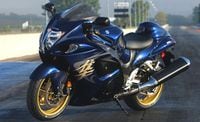
/cloudfront-us-east-1.images.arcpublishing.com/octane/XNVY3EVWZFCEVPUGJGAN633LXE.jpg)
/cloudfront-us-east-1.images.arcpublishing.com/octane/2PLTVHXY7FDSPFHKU5CFOC43ZY.jpg)
/cloudfront-us-east-1.images.arcpublishing.com/octane/B6M3WTRLFZGNXBEATNXPVGBBD4.jpg)
/cloudfront-us-east-1.images.arcpublishing.com/octane/4CMH3FI73BEM5D6MFYX42FLDSQ.jpg)
/cloudfront-us-east-1.images.arcpublishing.com/octane/RIHAPYNWU5H3XAOXNOPRWCBTQA.jpg)
/cloudfront-us-east-1.images.arcpublishing.com/octane/HU4NUBCL3VAFZA75VYRCMAUHVM.jpg)
/cloudfront-us-east-1.images.arcpublishing.com/octane/OB43AZK7TRA6XLZL5WRDVW2TDA.jpg)
/cloudfront-us-east-1.images.arcpublishing.com/octane/5G44Y3FXWNFSTEQKCA355PXOPU.jpg)
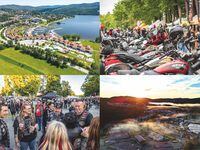
/cloudfront-us-east-1.images.arcpublishing.com/octane/XRI4GTLCVBA5NESASCBIR5LYQI.jpg)
/cloudfront-us-east-1.images.arcpublishing.com/octane/EF7566PXARGMBAOMLWTECYL3LE.jpg)
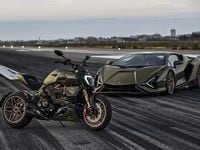
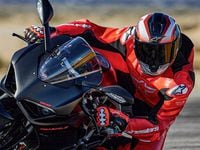

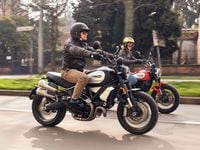
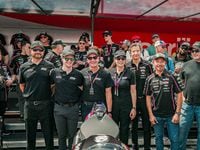
/cloudfront-us-east-1.images.arcpublishing.com/octane/3LASNXSWUZFFPISURDJF3OCWBU.jpg)
/cloudfront-us-east-1.images.arcpublishing.com/octane/2BHJKWUTBNBTLMQCKDNVEG6DKQ.jpg)
/cloudfront-us-east-1.images.arcpublishing.com/octane/MPHXIIV54NAU5L6E4SYZHCXVRM.jpg)



/cloudfront-us-east-1.images.arcpublishing.com/octane/WYXFHF4ZOBBTXELIZDB2FJXU64.jpg)
/cloudfront-us-east-1.images.arcpublishing.com/octane/K5FNV7ONUVDXJJ2H5BIWUGBGTI.jpg)